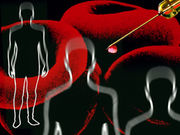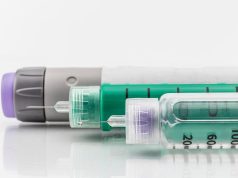Improved function, QoL, activity, pain but not joint structure in adults with hemophilia with joint disease
THURSDAY, Aug. 31, 2017 (HealthDay News) — For adults with severe hemophilia and pre-existing joint disease, prophylaxis is associated with improved function, quality of life, activity, and pain, according to a study published online Aug. 24 in the Journal of Thrombosis and Haemostasis.
Marilyn J. Manco-Johnson, M.D., from the University of Colorado Anschutz Medical Campus in Aurora, and colleagues described three-year bleeding, joint function, health-related quality-of-life (HRQoL), and other outcomes for males aged 12 to 50 years with severe hemophilia who were randomized to sucrose-formulated recombinant FVIII prophylaxis or on-demand (OD) therapy.
The researchers found that adults maintained excellent adherence following three years of prophylaxis, with 94 percent reduction in total and joint bleeding events (BEs) despite severe pre-existing arthropathy. Overall, 35.7 percent of prophylaxis participants were bleed-free and 76.2 percent had fewer than two BEs per year. Prophylaxis correlated with improved joint health, as assessed by the Colorado Adult Joint Assessment Scale, compared with OD, and with improved HAEMO-QoL-A scores, less chronic pain, and about twofold less health care resource utilization (HRU). Prophylaxis was also favored in activity, EQ-5D-3L, and satisfaction scores. There was no difference in magnetic resonance imaging score changes for prophylaxis versus OD.
“Prophylaxis versus OD in adults with severe hemophilia A and arthropathy led to decreased bleeding, pain, and HRU, better joint health, activity, satisfaction, and HRQoL, but no reduction in structural arthropathy progression, suggesting preexisting joint arthropathy may be irreversible,” the authors write.
Several authors disclosed financial ties to pharmaceutical companies, including Bayer AG, which funded the study.
Copyright © 2017 HealthDay. All rights reserved.








